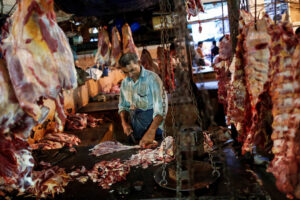THE Department of Agriculture (DA) said it accredited 34 Indian suppliers of buffalo meat (carabeef), authorizing them to continue shipping to the Philippines, though 13 located in Indian states with active foot-and-mouth disease (FMD) outbreaks remain barred for the moment.
“The move is aimed at broadening the sourcing options for Philippine food processors and potentially lowering costs for Filipino consumers, particularly for products like corned beef,” Agriculture Secretary Francisco P. Tiu Laurel, Jr. said in a statement on Wednesday.
The DA has a current ban on buffalo meat from the Indian states of Bihar, Maharashtra, and Telangana, following the detection of FMD there.
“To protect local cattle and livestock, the DA has imposed an import ban on meat from these three states,” the agency said.
India is the Philippines’ sole source of imported buffalo meat.
The Philippines typically imports about 40% of its buffalo meat needs to augment domestic production.
“We do not intend to increase imports. What we want is to encourage more foreign companies to compete for our market, which will ultimately drive down the cost of imported agricultural products, benefiting consumers,” Mr. Laurel added.
He added that all 34 Indian exporters met the Philippines’ requirements, though 13 companies in the three states remain subject to the ban pending the end of the outbreak.
“Imports of carabeef from these regions will be prohibited until India’s national competent authority declares them free from FMD,” the DA said.
The DA added that it will not grant exemptions for heat-treated products, with the accreditation applying specifically to the trade in frozen carabeef.
Mr. Laurel said that if India applies a method of boiling carabeef to address FMD concerns — similar to the process Pakistan uses for buffalo meat it exports to China — he would consider allowing such imports.
“If they can do that, I will allow it,” he added.
According to the National Meat Inspection Service, all 34 companies met international food safety standards, including Good Manufacturing Practices and Hazard Analysis and Critical Control Points. — Adrian H. Halili

